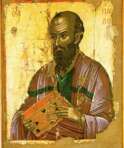Cretan School

Cretan School
The Cretan School was a significant movement in icon painting, emerging under post-Byzantine art while Crete was under Venetian rule during the Late Middle Ages. It flourished following the Fall of Constantinople, becoming a central force in Greek painting during the 15th, 16th, and 17th centuries. This school is known for its unique blend of Eastern and Western artistic traditions, particularly evident in the works of its most famous artist, El Greco, who was the most successful of its members in adapting to and impacting Western European art.
The Cretan School was characterized by its combination of the maniera greca (Byzantine idiom) and maniera latina (Western techniques), leading to an eclectic style. Art historians recognize the influence of Renaissance Italian art on Cretan painting, particularly in technique and subject matter. This amalgamation resulted in a novel style known as the Cretan School of Icon-Writing. Key artists from this school include Theophanes the Cretan, Michael Damaskinos, Giorgios Klontzas, and Domenikos Theotokopoulos (El Greco). Their works exhibit perfection in figures, depicted in more human forms and rich colors.
By the 16th century, Cretan artists had gained widespread fame, with their works sought after across Greece, the Mediterranean, and Europe. However, the artistic prosperity of the Cretan School was abruptly ended with the Ottoman conquest of Crete in 1669. Today, the works of the Cretan School are displayed in various museums, monasteries, and collections, offering a glimpse into this distinct chapter in art history.
For collectors, auctioneers, and art and antiques experts, the Cretan School remains a fascinating study. Its unique fusion of Eastern and Western art styles during a pivotal historical period makes it a valuable subject for understanding the broader evolution of European art.
For updates on new product sales and auction events related to the Cretan School, we invite you to sign up for our newsletter. This subscription will keep you informed about the latest developments and opportunities in this field of art history.
| Country: | Italy, Serenissima Repubblica di Venezia (late 7th century - 1797) |
|---|---|
| Start of the period: | XV century |
| End of the period: | XVII century |